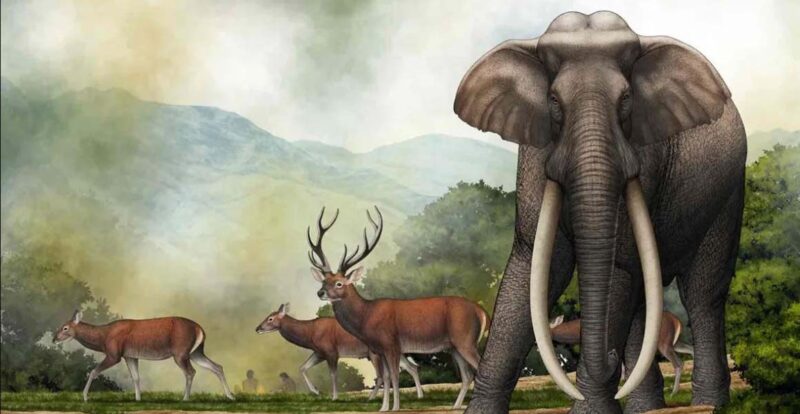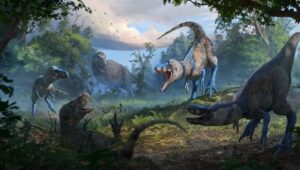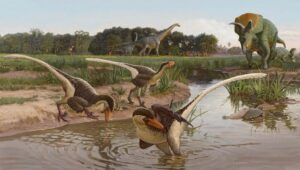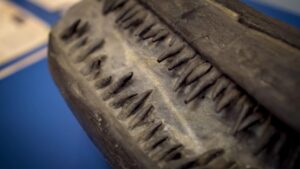Archaeologists have uncovered evidence that prehistoric humans butchered giant straight-tusked elephants 300,000-400,000 years ago. They believe it represents the earliest known butchery of these animals in the region.
The find began more than 20 years ago, when researchers saw a brown stump sticking out of the ground in India’s Kashmir Valley. At first, they assumed it was fossilized wood, but on further inspection, it turned out to be a giant tusk. Nearby were further fossils — part of an elephant graveyard — and 87 stone tools. Returning to the site two decades later, they have begun unraveling its secrets.
At the center of the breakthrough is the Palaeoloxodon turkmenicus, an extinct species of straight-tusked elephant. Weighing up to 13 tons, it was among the largest animals to ever roam the Earth. When researchers at the University of Jammu in India started analyzing it recently, they learned that the animal perished at least 300,000 years ago and was sick when it died.
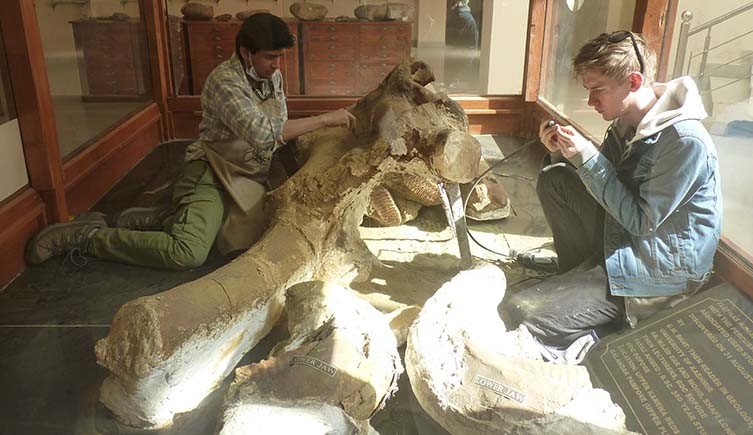
Studying the skull at the University of Jammu. Photo: Simon Parfitt
Sick elephant
“When we peered into the damaged section, we could see that something was odd about the inside of the skull,” Simon Parfitt, co-author of the study, told the Natural History Museum. “Elephant skulls are full of air spaces to make the head lighter, but the bone along the sinus cavities had grown in an abnormal, spongy structure. We believe this indicates the individual was suffering from sinusitis, possibly due to an infection…or from a severe respiratory disease. Either way, it may have contributed to its death.”
The stone tools and skeletal fragments at the site further indicated that ancient humans may have been involved in the death and butchery of the elephant. It would be incredibly difficult to prove that they actively hunted the elephant, and there is no direct evidence of this. However, the team is confident that humans were eating the elephant’s meat.
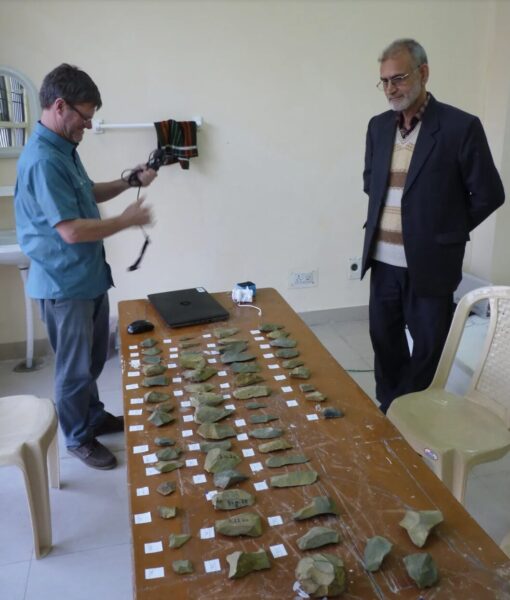
Eighty-seven stone tools were found at the site. Photo: Advait Jukar.
Size a problem for ancient humans
It seems they used rocks to smash through the bone, accessing the bone marrow and grease within. The tools would have stripped meat from the elephant carcass.
“Given the size of these animals and the relatively small size of human groups, it’s unlikely they would have been able to fully butcher this elephant before it started to rot. This means they probably went for the prime cuts of meat…” said Parfitt.
The evolutionary history of the Palaeoloxodon is a bit of a mystery. “From the general shape of the skull, it’s quite apparent that the elephant belonged to Palaeoloxodon,” Steven Zhang told SciTechDailiy. “Yet what’s puzzled experts for some time is that the Kashmir skull lacks a thickened, forward-projecting crest at the skull roof, which typifies other Palaeoloxodon skulls found in India.”
Instead, this skull resembled one found in Turkmenistan in the 1950s. Previously, experts thought the Turkmenistan skull might be from an atypical Palaeoloxodon antiquus — the species found in Europe. This discovery in India confirms it is a distinct species, Palaeoloxodon turkmenicus.
